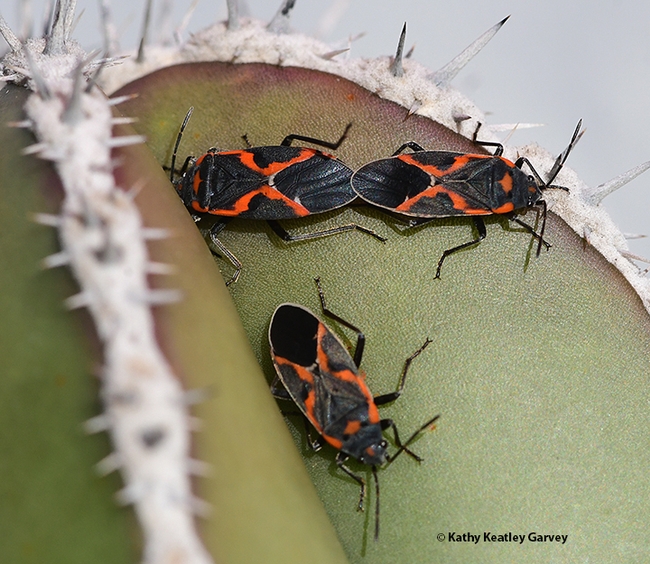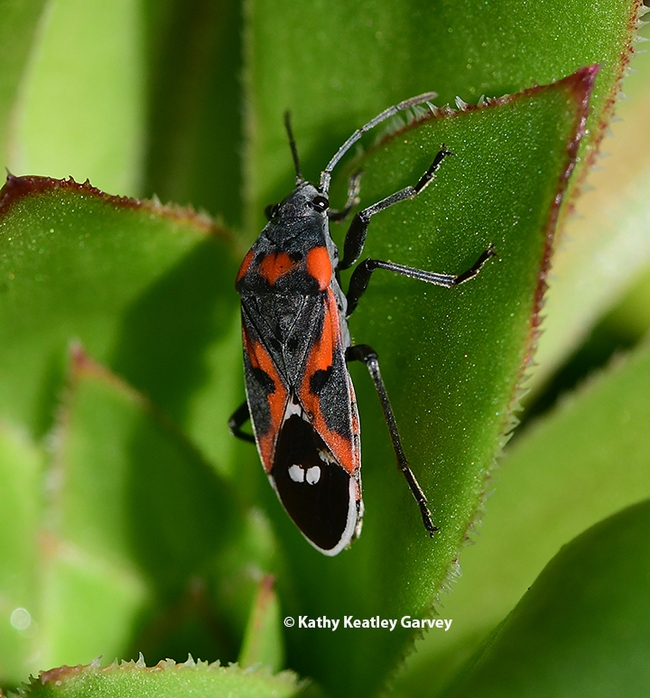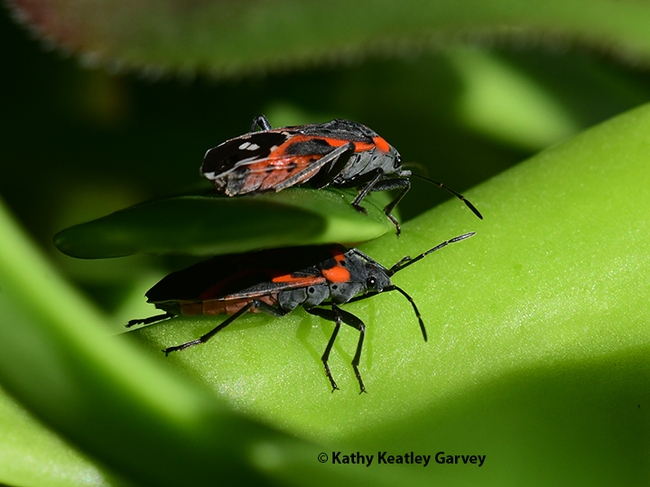Have you seen any overwintering milkweed bugs lately?
About a dozen milkweed bugs, Oncopeltus fasciatus, emerged from seclusion Jan. 2, 2022 in our Vacaville garden. The temperature hovered at 32 degrees that morning, but when the sun peeked out, there they were. Mating.
Little early, aren't ya, buddies? If you're waiting for the first milkweed seeds, get set for a long wait.
Jack Frost nailed what was left of most of our milkweed. So where are the colorful reddish-orange/black bugs overwintering? In our nearby cacti and succulents.
Milkweed bugs are known as "seed eaters" of milkweed, but actually they are opportunistic and generalists, according to Hugh Dingle, emeritus professor of entomology at the University of California, Davis. In a September 2019 Bug Squad blog, Dingle told us they will eat monarch eggs and larvae (milkweed is the host plant of monarchs), as well as the oleander aphids that infest the milkweed.
"Milkweed bugs will get protein from wherever they can find it," said Dingle, an insect migration biologist and author of the textbook, Animal Migration: the Biology of Life on the Move. They've been known to feed on insects trapped in the sticky pollen of the showy milkweed (Asclepias speciosa). And on nectar.
Dingle served on the UC Davis Department of Entomology faculty from 1982 to 2002, achieving emeritus status in 2003. National Geographic featured him in its cover story on “Great Migrations” in November 2010. LiveScience interviewed him for its November 2010 piece on “Why Do Animals Migrate?”
But milkweed isn't the only plant that these bugs breed and feed on. "The fascinating thing about milkweed bugs is that they will feed and breed spontaneously on Erysimum and Cheiranthus, two Brassicaceous genera that make cardenolides!" UC Davis butterfly guru Art Shapiro, distinguished professor of evolution and ecology, told us this week.
The amazing world of milkweed bugs and the plants they feed and breed on...
Attached Images:

Two's company, three's a crowd? Milkweed bugs on a cactus on Jan. 2, 2022 in Vacaville, Calif. (Photo by Kathy Keatley Garvey)

A colorful milkweed bug, Oncopeltus fasciatus, sunning itself on a succulent on Jan. 2, 2022 in Vacaville, Calif. (Photo by Kathy Keatley Garvey)

Warmth of the January sun and these milkweed bugs are getting all of it. (Photo by Kathy Keatley Garvey)